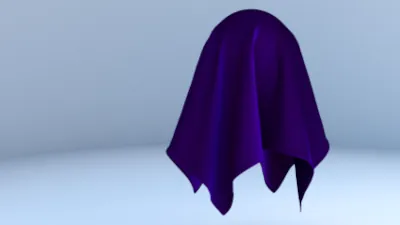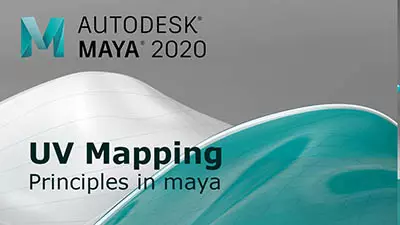Introduction to Maya - Modeling Fundamentals Vol 1
This course will look at the fundamentals of modeling in Maya with an emphasis on creating good topology. We'll look at what makes a good model in Maya and why objects are modeled in the way they are.
#
1
24-02-2012
, 09:20 AM
Registered User
Join Date: Mar 2011
Join Date: Mar 2011
Posts: 29
Could someone explain me Rebuild Curve/Surface
#
2
24-02-2012
, 09:40 AM

Avatar Challenge Winner 2010
#
3
24-02-2012
, 02:42 PM
EduSciVis-er
Join Date: Dec 2005
Join Date: Dec 2005
Location: Toronto
Posts: 3,374
#
4
24-02-2012
, 11:04 PM
Registered User
Join Date: Jan 2012
Join Date: Jan 2012
Posts: 43
You can fiddle around with parameters, but you'll nerver get what you want if you don't get it. That's the core of the Nurbs trade.
#
5
24-02-2012
, 11:44 PM
In the Cartesian system we are all used to S(x,y,z) describing a point in space S. In a parametric CURVE the function would look like C(X(t), Y(t), Z(t)) and describes any point on the parametric CURVE C. Note that the (X,Y,Z) coordinates of the curve function C() are all functions of the PARAMETER t. Hence "PARAMETRIC" curve. Think of a parametric surface being made up of a system of parametric curves running perpendicular to each other which we call the U and V directions.
There are two basic type of parameterization in Maya - Uniform and Chord length
Here is a link that describes the two: https://download.autodesk.com/us/maya...mber=d0e228074
But do not let the long scary name frighten you.
With NURBs every curve of surface is described as a function. Think of the parameteriztion as the coordinates you feed into the function to determin your position on the surface of the curve. So for a line you have L(x) where x describes the position along the line L and S(x,y) describes the position on the surface S. Now L() and S() would would describe Cartesian system. NURB's uses parameterized functions as described above and I doubt anyone wants to sit through a lecture on the mathematics of parameterized non-rational-bsplines (NURBs). So I will try to just describe the important bits...
(1) what is parameterization? (see the link above)
(2) why is rebuilding things important?
For the second part it's easier for me to show you then to explain it because explaining requires more math-speak and I don't want to over complicate this any more then I already have so far lol.
For those that are having trouble sleeping here is the best (easiest) to grasp description of parametric curves and surfaces. **** ARGH! BEWARE THIS WAY THAR BE MONSTERS! **** https://docs.happycoders.org/orgadoc/...article-en.pdf
Standbye I will need 10 minutes to record something that will hopefully demystify things and be useful to the SM community...
"If I have seen further it is by standing on the shoulders of giants." Sir Isaac Newton, 1675
Last edited by ctbram; 25-02-2012 at 12:43 AM.
#
6
25-02-2012
, 12:45 AM
Standbye...
"If I have seen further it is by standing on the shoulders of giants." Sir Isaac Newton, 1675
Last edited by ctbram; 25-02-2012 at 04:31 AM.
#
7
25-02-2012
, 04:28 AM
Some of the good take aways are:
1. What is paramaterization?
2. Why does maya support two kinds (Uniform and Chord Length)?
3. What is a NURB?
4. What is the degree of a curve and why does Maya support 1, 2, 3, 5, and 7 when most people only use 1 and 3?
5. Why is rebuilding curves and surfaces important and how is rebuiilding related to parameterization?
It is encoding now and then I have to upload it. I may have to break it into two parts if it's to long.
I hope you guys find it helpful. I believe NURBs are very powerful and hope this will make them a little less mysterious and scary.
I will post the link to the video as soon as it's encoded and uploaded....
"If I have seen further it is by standing on the shoulders of giants." Sir Isaac Newton, 1675
#
8
25-02-2012
, 04:48 AM
https://youtu.be/ZVIKINCEm7I
NOTES: I just did this of the top of my head. I rambled on a bit but for some reason my vision is all blurry today and I was having trouble concentrating and there was a lot of stuff I wanted to try and cover.
A couple things I want to correct:
I said "even number" a lot and what I meant was Integer number. For a curve or surface to have uniform parameterization it will always be 0 at the start and end in an Integer number. Also I would recommend alway paramterizing from 0 span so you can see that the max value equals the number of spans.
It is not necessary rebuild a surface or curve after every operation. However, you want to rebuild and clear history before you attach and then rebuild after attaching. If you attach, then sculpt, then rebuild your surface can change.
When I was showing the cv's do not move but the edit points do and was struggling to find the words to explain. But the simple explaination is when either end point has to be changed to a Integer or changed to match the number of spans the edit points have to also be redistributed to maintain uniform parameterization and that is why the edit points shift.
Anyway I hope I sid not bore people to death.
"If I have seen further it is by standing on the shoulders of giants." Sir Isaac Newton, 1675
Last edited by ctbram; 25-02-2012 at 07:24 AM.
#
9
25-02-2012
, 07:04 AM
Registered User
Join Date: Mar 2011
Join Date: Mar 2011
Posts: 29
Thanks man.
#
10
25-02-2012
, 07:07 AM
"If I have seen further it is by standing on the shoulders of giants." Sir Isaac Newton, 1675
#
11
25-02-2012
, 09:29 AM
Registered User
Join Date: Mar 2011
Join Date: Mar 2011
Posts: 29
#
12
25-02-2012
, 12:39 PM
My background is in CAD/CAM/CAE automotive surfacing, linear and non-linear finite element analysis. CAD (Computer Aided Design) and applications like - Alias Automotive, Solid Works, Catia, Inventor, AutoCAD, Rhino, etc. all use NURBs pretty much exclusively. In surfacing and part design applications NURBs have serious advantages over polygons in efficiency and precision. They are not as flexible as polygons when it comes to texturing and deformation due to patch seams. They are not nearly as flexible as polygons when it comes to sculpting which is the latest hotness in the movie and entertainment industry.
Due to my surfacing background I feel NURBs are very powerful and under utilized in Maya. But unfortunately Maya's NURBs tool set has, from the start, lacked some critical features that you get in true surface modeling apps that make them very difficult to use effectively in Maya. In addition both Autodesk and Alias before them have really let the NURBs tools in Maya languish and so now even the tools that are available are horribly antiquated. Many of the NURBs features in Maya cannot even be used at all due to lack of required support tools. Examples are mentioned in the video above - 2nd, 5th, and 7th degree curves and surface support and chord length parameterization require tools that are missing completely in Maya to be used and almost seem to be included simply as vestigial remains of the surfacing applications from which Maya was derivered (StudioTools: Now called Alias Automotive).
"If I have seen further it is by standing on the shoulders of giants." Sir Isaac Newton, 1675
Last edited by ctbram; 25-02-2012 at 12:58 PM.
#
13
26-02-2012
, 08:13 PM
Registered User
Join Date: Mar 2011
Join Date: Mar 2011
Posts: 29
#
14
26-02-2012
, 10:39 PM

Avatar Challenge Winner 2010
#
15
27-02-2012
, 12:02 AM
"If I have seen further it is by standing on the shoulders of giants." Sir Isaac Newton, 1675
Posting Rules Forum Rules
Similar Threads
Is there a way to get 2 pivot points on a group of objects? (I'll explain in topic)
by SLPfirehawk in forum Maya Basics & Newbie Lounge replies 9 on 27-06-2008
I have a problem with Attach, Rebuild, Detach surface.
by ming in forum Maya Basics & Newbie Lounge replies 0 on 19-05-2006
Rebuild Surface & Trim convert
by cris007 in forum Maya Modeling replies 0 on 04-01-2006
Trim Surface Rebuild
by iron_tick in forum Maya Modeling replies 2 on 08-06-2003
UVs.....Umm...explain?
by RageMatrix in forum Maya Basics & Newbie Lounge replies 3 on 06-02-2003
Topics
Free Courses
Full Courses
VFX News
How computer animation was used 30 years ago to make a Roger Rabbit short
On 2022-07-18 14:30:13
Sneak peek at Houdini 19.5
On 2022-07-18 14:17:59
VFX Breakdown The Man Who Fell To Earth
On 2022-07-15 13:14:36
Resident Evil - Teaser Trailer
On 2022-05-13 13:52:25
New cloud modeling nodes for Bifrost
On 2022-05-02 20:24:13
MPC Showreel 2022
On 2022-04-13 16:02:13









